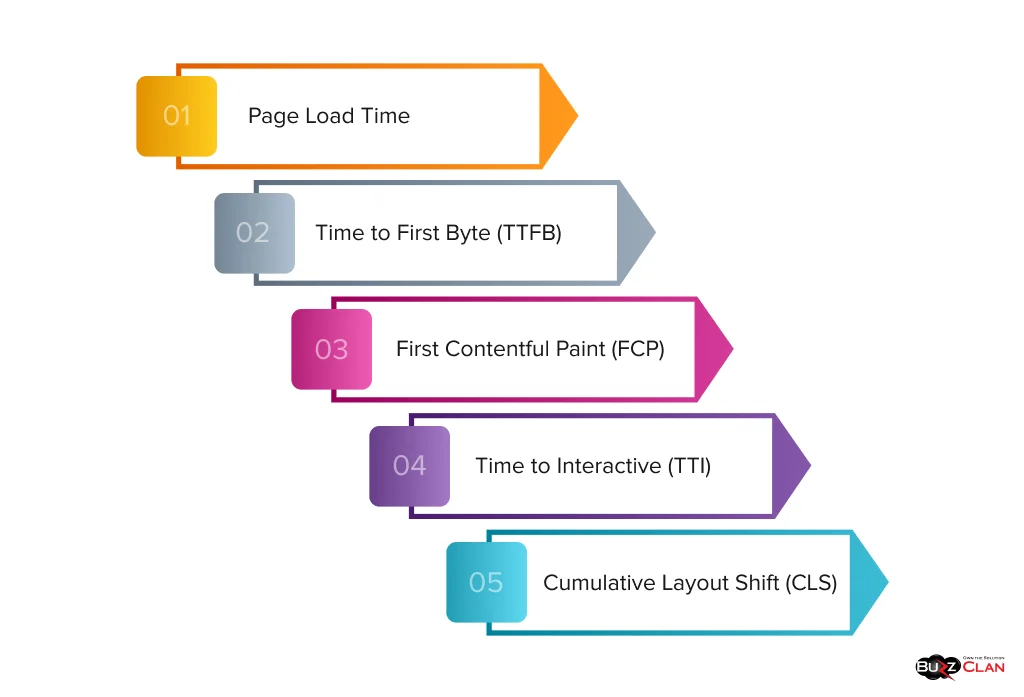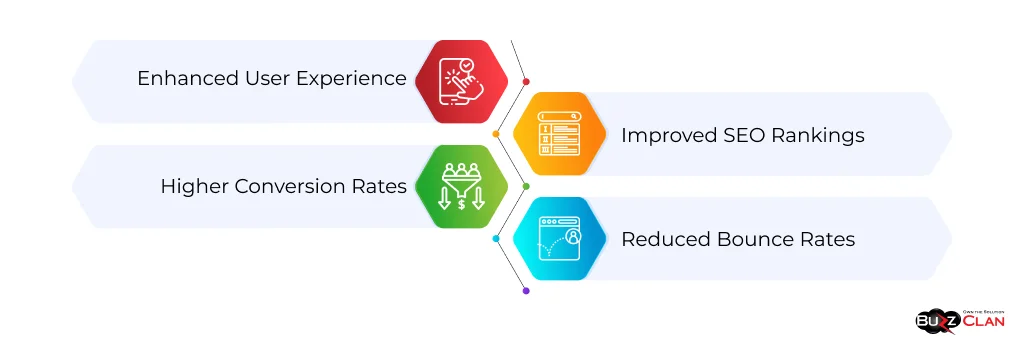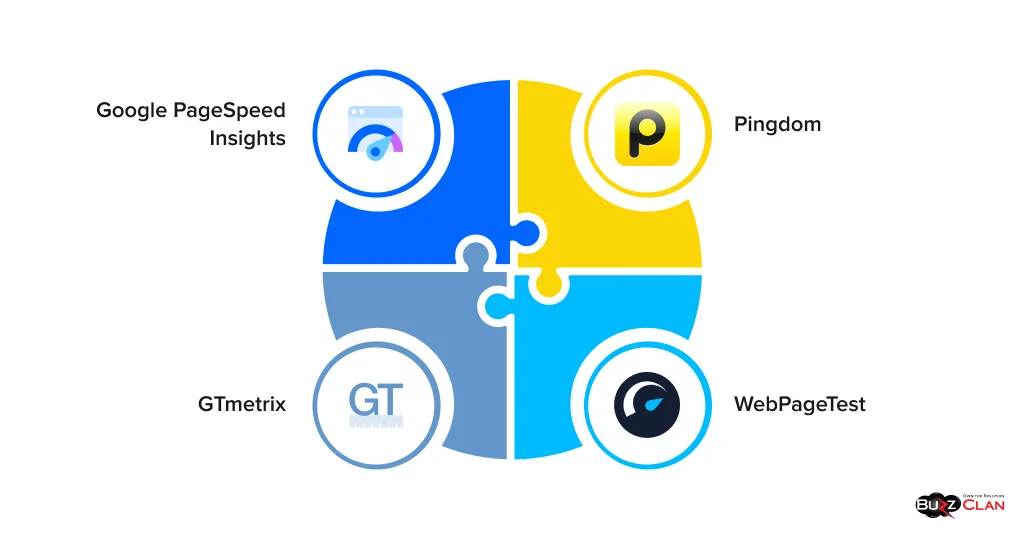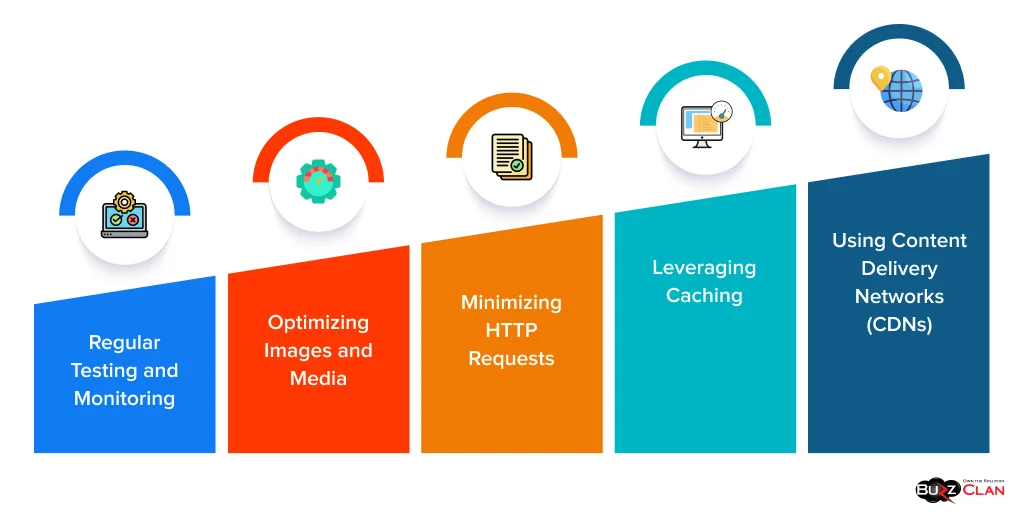The Ultimate Guide to Website Performance: Strategies for Speed and Success
Deepa Desai
Oct 3, 2024
Introduction
In today’s digital age, website performance has become critical in determining the success of online businesses and digital platforms. A website’s speed, responsiveness, and overall performance directly impact user experience, search engine rankings, and conversion rates. As internet users increasingly demand instant gratification and seamless experiences, the importance of optimizing website performance cannot be overstated.
This comprehensive guide will delve into the world of website performance, thoroughly understanding its importance, how to test and monitor it, optimization techniques, and the tools available to help you achieve peak performance. Whether you’re a website owner, developer, or digital marketer, this piece will equip you with the knowledge and strategies to enhance your website’s performance and drive business success.
Throughout this article, we’ll explore the key components of website performance, discuss various testing and monitoring methodologies, share optimization techniques, and highlight real-world examples of successful performance improvements. By the end, you’ll have a solid grasp of analyzing, optimizing, and maintaining your website’s performance for maximum impact.
What is Website Performance?
Website performance refers to the speed and efficiency with which a website loads and operates. It encompasses various aspects of a site’s functionality, including page load times, responsiveness to user interactions, and the smooth execution of dynamic elements. A high-performing website loads quickly and provides a seamless and enjoyable user experience across different devices and network conditions.
Key components of website performance include

- Page Load Time: The time it takes for a web page to load and become interactive fully.
- Time to First Byte (TTFB): The time it takes for a browser to receive the first byte of data from the server.
- First Contentful Paint (FCP): The time it takes for the first piece of content to appear on the screen.
- Time to Interactive (TTI): The time it takes for a page to become fully interactive.
- Cumulative Layout Shift (CLS): A measure of visual stability indicating how much of an unexpected layout shift occurs during the loading phase.
Performance Metrics
To quantify website performance, several metrics are commonly used:
- Page Speed: Measured in seconds, this indicates how quickly a page loads.
- Bounce Rate: The percentage of visitors who leave a site after viewing only one page.
- Conversion Rate: The percentage of visitors who complete a desired action (e.g., purchasing or signing up for a newsletter).
- Server Response Time: The time it takes for a server to respond to a browser request.
- Page Size: The total size of a web page, including all resources.
- Number of HTTP Requests: The number of separate requests to load all page elements.
These metrics provide a comprehensive view of a website’s performance and help identify areas for improvement.
Importance of Website Performance

User Experience
Website performance plays a crucial role in shaping user experience. A fast, responsive website increases user satisfaction, engagement, and longer visit durations. Conversely, slow-loading pages can frustrate users, leading to higher bounce rates and decreased user loyalty. Studies have shown that even a one-second delay in page load time can result in a 7% reduction in conversions.
SEO and Ranking
Search engines like Google consider website performance as a ranking factor. Faster websites are more likely to rank higher in search results, leading to increased visibility and organic traffic. Google’s Core Web Vitals, which include metrics like Largest Contentful Paint (LCP), First Input Delay (FID), and Cumulative Layout Shift (CLS), have become crucial factors in determining search rankings.
Conversion Rates
Website performance directly impacts conversion rates. A faster website can lead to higher conversion rates as users are likely to complete desired actions with a smooth, uninterrupted experience. For e-commerce sites, even a 100-millisecond delay in load time can lead to a 1% decrease in conversion rates.
Case Studies
Several real-world examples highlight the impact of website performance:
- Amazon found that every 100ms of latency cost them 1% in sales.
- Walmart observed that for every 1-second improvement in page load time, they experienced up to a 2% increase in conversions.
- Pinterest reduced perceived wait times by 40% and saw a 15% increase in search engine traffic and sign-ups.
These cases underscore the significant business impact of optimizing website performance.
Website Performance Testing
Website performance testing involves evaluating how a website performs under various conditions. It identifies bottlenecks, assesses load times, and ensures the site can handle expected traffic volumes. Regular testing is crucial for maintaining optimal performance and identifying issues before they impact users.
Testing Tools

Numerous tools are available for testing website performance:
- Google PageSpeed Insights: Provides performance scores and suggestions for a site’s mobile and desktop versions.
- GTmetrix: Offers detailed performance reports and recommendations.
- Pingdom: A comprehensive load times and performance grades analysis is provided.
- WebPageTest: Allows testing from multiple locations and devices.
How to Test
To test website performance:
- Choose a testing tool that aligns with your specific needs.
- Enter your website URL into the tool.
- Run the test and wait for the results.
- Analyze the report, paying attention to key metrics and recommendations.
- Identify areas for improvement based on the test results.
- Implement changes and re-test to measure improvements.
Regular testing from various geographic locations and devices ensures a comprehensive understanding of your site’s performance.
Website Performance Monitoring
Keeping a track of website performance is imperative to improve performance and stay miles ahead of competitors. Here is why it’s important to monitor performance on a regular basis.
Importance of Monitoring
Continuous website performance monitoring is essential for maintaining optimal user experience and identifying issues promptly. It allows you to:
- Detects performance degradation in real time.
- Identify patterns and trends in performance over time.
- Respond quickly to issues before they significantly impact users.
- Make data-driven decisions for ongoing optimization.
Monitoring Tools

Several tools are available for ongoing performance monitoring:
- New Relic: Provides real-time performance monitoring and analytics.
- Datadog: Offers full-stack observability for websites and applications.
- Pingdom: Provides continuous uptime and performance monitoring.
- Google Analytics: Offers basic performance monitoring alongside other website analytics.
Setting Up Monitoring
To set up website performance monitoring:
- Choose a monitoring tool that fits your needs and budget.
- Sign up for the service and add your website.
- Configure monitoring settings, including frequency and alert thresholds.
- Set up notifications for performance issues or downtime.
- Regularly review monitoring data to identify trends and areas for improvement.
- Act on insights gained from monitoring to enhance performance continually.
Website Performance Optimization
Optimizing performance boosts accessibility, reduces bounce rate, and can convert more visitors into customers. Here is how you can optimize your website.
Optimization Techniques
Several techniques can be employed to optimize website performance:
- Image Optimization: Compress images, use appropriate formats, and implement lazy loading.
- Minification: Minimize HTML, CSS, and JavaScript files to reduce file sizes.
- Browser Caching: Implement browser caching to store static files locally on users’ devices.
- Content Delivery Network (CDN): Use a CDN to serve content from servers geographically closer to users.
- Reduce HTTP Requests: Combine files, use CSS sprites, and limit the use of external resources.
- Enable Compression: Use Gzip compression to reduce the size of transmitted data.
- Optimize Database Queries: Improve database performance to reduce server response times.
- Use Asynchronous Loading: Load non-critical resources asynchronously to improve perceived load times.
Benchmarking
Benchmarking involves comparing your website’s performance against industry standards or competitors. To benchmark:
- Identify key performance metrics relevant to your industry.
- Use performance testing tools to measure your site’s metrics.
- Compare your results with industry averages or top-performing competitors.
- Set performance goals based on these benchmarks.
- Regularly re-benchmark to track progress and adjust strategies.
Real-World Examples
Several websites have successfully optimized their performance:
- The Financial Times reduced page load time by 50% through aggressive optimization techniques.
- Airbnb improved page load times by 68% through image optimization and code splitting.
- BBC News reduced page load time by 65% by implementing a responsive design and optimizing content delivery.
Tools for Analyzing Website Performance
Gone are the days when you could think of analyzing website performance manually. Here is a list of tools to help you do the job well.
Popular Tools
Several tools are widely used for analyzing website performance:
- Google Lighthouse: An open-source tool that provides performance, accessibility, and SEO audits.
- WebPageTest: Offers detailed performance metrics and waterfall charts for resource loading.
- Chrome DevTools: Provides in-browser performance profiling and analysis.
- YSlow: A tool that analyzes web pages based on Yahoo’s rules for high-performance websites.
Comparison of Tools
When comparing performance analysis tools, consider the following:
| Criteria | Description |
|---|---|
| Ease of Use | Some tools, like Google PageSpeed Insights, are user-friendly, while others, like Chrome DevTools, require more technical knowledge. |
| Depth of Analysis | WebPageTest offers more detailed insights than straightforward options. |
| Integration | Consider tools that integrate with your existing workflow or content management system. |
| Cost | While many tools are free, some premium options offer advanced features at a cost. |
| Reporting | Look for tools that provide clear, actionable reports and recommendations. |
Case Studies and Real-World Examples
What’s better than understanding the role of website optimization with companies that have achieved success? Peruse through the list to clear all your doubts.
Case Study 1: E-commerce Site Optimization
An e-commerce site experiencing high bounce rates and low conversion rates implemented a performance optimization strategy:
- They used WebPageTest to identify performance bottlenecks.
- Image optimization reduced page size by 40%.
- Implementing a CDN improved international users’ load times by 30%.
- Browser caching reduced repeat visit load times by 50%.
- These changes resulted in a 25% decrease in bounce rate and a 15% increase in conversions.
Case Study 2: News Website Performance Improvement
A popular news website focused on mobile performance optimization:
- They used Google Lighthouse to analyze mobile performance.
- Implementing Accelerated Mobile Pages (AMP) reduced mobile load times by 70%.
- Lazy loading of images improved initial page load time by 40%.
- These optimizations led to a 30% increase in mobile user engagement and a 20% increase in ad revenue.
Industry-Specific Examples
- Travel Industry: A travel booking site improved site speed by 35% through server-side rendering, resulting in a 12% increase in bookings.
- Education Sector: An online learning platform reduced video buffering times by 60% through CDN optimization, leading to a 25% increase in course completion rates.
- Healthcare: A telemedicine platform improved application response times by 45% through database optimization, resulting in a 30% increase in patient satisfaction scores.
Best Practices for Website Performance

Regular Testing and Monitoring
Implement a schedule for regular performance testing and continuous monitoring. This allows you to:
- Catch performance issues early.
- Track the impact of changes and updates.
- Identify trends and patterns in performance over time.
- Make data-driven decisions for ongoing optimization.
Optimizing Images and Media
Images and media often constitute the bulk of a page’s size. To optimize:
- Compress images without sacrificing quality.
- Use appropriate file formats (e.g., JPEG for photographs, PNG for transparent graphics).
- Implement responsive images to serve appropriately sized images for different devices.
- Use lazy loading to defer the loading of off-screen images.
Minimizing HTTP Requests
Reducing the number of HTTP requests can significantly improve load times:
- Combine multiple CSS or JavaScript files into single files.
- Use CSS sprites to combine multiple images into a single image.
- Inline critical CSS to reduce render-blocking resources.
- Evaluate and remove unnecessary third-party scripts.
Leveraging Caching
Effective caching can dramatically improve load times for repeat visitors:
- Implement browser caching with appropriate expiration times.
- Use server-side caching to reduce database queries and dynamic content generation.
- Leverage CDN caching for static assets.
- Implement application-level caching where appropriate.
Using Content Delivery Networks (CDNs)
CDNs can significantly improve performance, especially for users geographically distant from your main server:
1. Choose a CDN with a wide distribution of servers.
2. Configure your CDN to cache static assets effectively.
3. Use CDN features like automatic image optimization and minification.
4. Consider using a multi-CDN strategy for optimal global performance.
Conclusion
Website performance is a critical factor in determining the success of online ventures. It directly impacts user experience, search engine rankings, and business outcomes. You can significantly enhance your website’s speed and responsiveness by understanding the key components of website performance, regularly testing and monitoring your site, implementing effective optimization techniques, and leveraging the right tools.
Remember that optimizing website performance is an ongoing process. As technologies evolve and user expectations change, staying informed about new optimization techniques and continually refining your approach is crucial. Regular testing, monitoring, and optimization should be integral to your website maintenance routine.
By prioritizing website performance, you not only improve the experience for your users but also gain a competitive edge in the digital landscape. Fast, responsive websites lead to higher user satisfaction, improved search engine rankings, and increased conversions – all of which contribute to the overall success of your online presence.
As you embark on your performance optimization journey, remember that even small improvements can have significant impacts. Start with the basics, measure your progress, and gradually implement more advanced optimization techniques. With dedication and the right approach, you can create a high-performing website that delights users and drives business success.
FAQs

Get In Touch
Follow Us

Get In Touch











